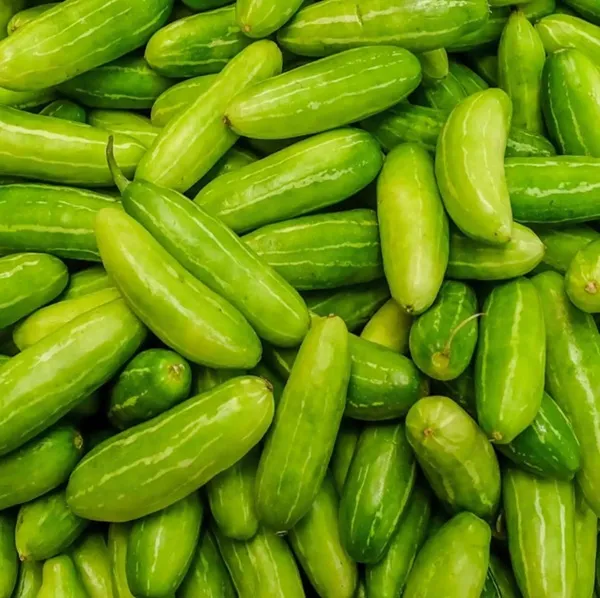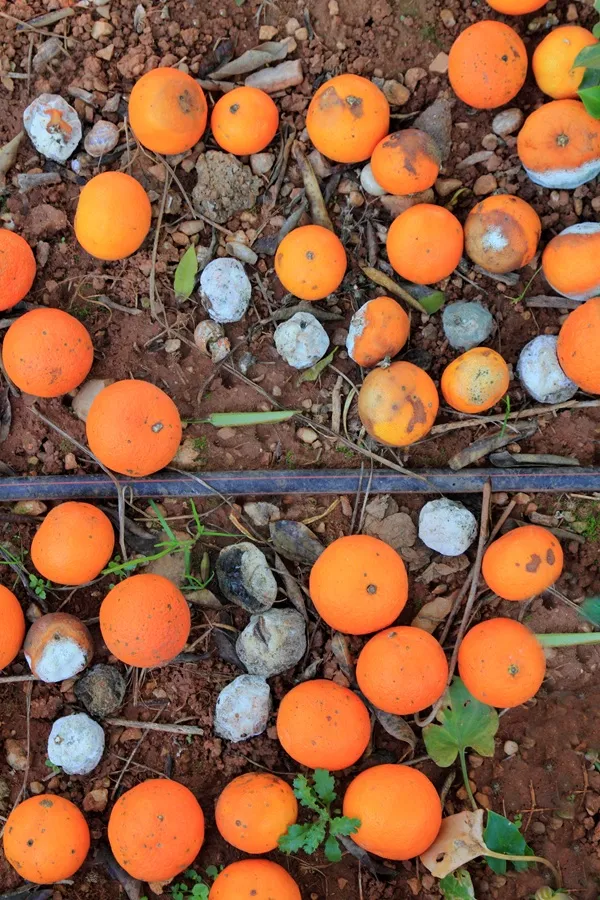Table of Contents
Tindora (Ivy Gourd): The Unsung Star of Tropical Cuisine
From Humble Vine to Global Superfood
Overview
Tindora (Coccinia grandis), also known as ivy gourd, scarlet gourd, or kowai fruit, is a tropical climbing vine cherished for its crunchy, mildly bitter fruits and tender leaves. Native to Africa and Asia, it thrives in warm climates and is a staple in Indian, Thai, and Indonesian cuisines. Valued for its nutritional profile and adaptability, tindora bridges traditional medicine and modern culinary trends.
Global Varieties, Colors, and Taste
While most tindora varieties are similar, regional differences exist:
- Indian Kovakkai:
- Color: Light green when young, turning orange-red when ripe.
- Taste: Mildly tangy with a slight bitterness; crunchy texture.
- Thai Tam Leung:
- Color: Dark green with white stripes.
- Taste: Sweeter, less bitter.
- African Scarlet Gourd:
- Color: Vibrant red when mature.
- Taste: Earthy, with a fibrous texture.
Nutrition & Glycemic Index (GI)
- Calories: 18 per 100g.
- Key Nutrients:
- Vitamin C (25% DV), Vitamin A (10% DV), iron, fiber.
- Antioxidants: Flavonoids, beta-carotene.
- Glycemic Index: 15 (very low), ideal for diabetics.
Health Benefits & Risks
- Benefits:
- Blood Sugar Control: Contains bioactive compounds that inhibit glucose absorption (studies in Journal of Ethnopharmacology).
- Digestive Health: High fiber aids digestion.
- Immunity Boost: Rich in vitamin C and antioxidants.
- Allergies: Rare but possible cross-reactivity with melons or cucumbers (Cucurbitaceae family).
Cultivation & Plant Structure
- Plant Structure:
- Vine: Perennial climber with heart-shaped leaves and tendrils. The thick vine can be cut and replanted easily in a pot and it can be easily grown at home yard or roof with some trellis support.
- Flowers: Small, white, unisexual (requires cross-pollination by bees).
- Fruit: Cylindrical, 2–5 cm long, green to red.
- Climate:
- Temperature: 25–35°C; frost-sensitive.
- Rainfall: 600–1500 mm annually; drought-tolerant once established.
- Soil: Well-drained loam/sandy soil (pH 6.0–7.5).
- Pests:
- Fruit flies, red pumpkin beetles.
- Managed via neem oil or pheromone traps.
Global Production & Trade
- Top Producers:
- India: Largest producer (Kerala, Tamil Nadu, Karnataka); called kovakkai or dondakaya.
- Thailand: Key ingredient in stir-fries and curries.
- Indonesia: Used in traditional dishes like sayur asem.
- Exporters: India, Thailand, Vietnam.
- Importers: USA, UAE, UK (South Asian diaspora demand).
- ROI:
- Initial Cost: $1,000–$2,000/acre (trellises, seeds).
- Yield: 8–12 tons/acre annually.
- Profit: $3,000–$5,000/acre (higher for organic).
Byproducts & Storage
- Byproducts:
- Pickles: Popular in India (preserved in oil and spices).
- Dried Chips: Dehydrated slices for snacks.
- Storage:
- Fresh: 1 week refrigerated in perforated bags.
- Freezing: Blanch slices for 2–3 minutes; store up to 6 months.
- Canning: Preserve in brine or vinegar (6–12 months).
Culinary Uses & Quick Recipes
- Indian Staples:
- Stir-Fry (Porichakottai): Sauté with mustard seeds, turmeric, grated coconut.
- Curry (Dondakaya Pulusu): Simmer in tamarind gravy with onions and chili.
- Thai Style:
- Pad Tindora: Stir-fry with shrimp paste, garlic, and bird’s eye chili.
- Quick Recipes:
- Tindora Chips: Thinly slice, toss with olive oil and salt, bake at 375°F until crisp.
- Stuffed Tindora: Hollow and fill with spiced chickpea flour.
Popularity in India
- Cultural Role: Featured in festivals like Onam (Kerala) as kovakkai thoran with, oil, mustard seeds, onions, ginger and grated coconut .
- Ayurveda: Used to treat jaundice, asthma, and skin conditions.
- Street Food: Fried tindora pakoras (fritters) with mint chutney.
Sustainability & Challenges
- Water Efficiency: Thrives with drip irrigation; minimal fertilizer needs.
- Invasive Potential: Classed as a weed in some regions (e.g., Florida, Australia).
- Market Growth: Rising demand in vegan and low-carb diets.
Conclusion
Tindora’s resilience, nutritional bounty, and culinary flexibility make it a hidden gem of tropical agriculture. From Kerala’s backyards to Bangkok’s street markets, this unassuming vine nourishes millions while offering farmers a steady income. As global palates embrace plant-based diversity, tindora is poised to step into the spotlight as a sustainable superfood.
Sources: FAO, Journal of Ethnopharmacology, Indian Council of Agricultural Research (ICAR).









